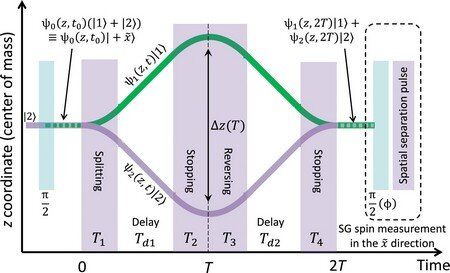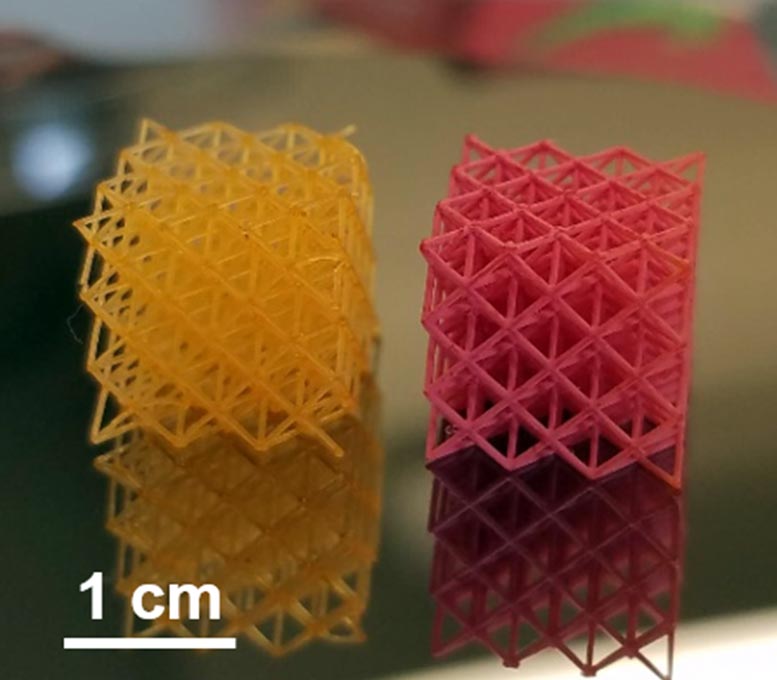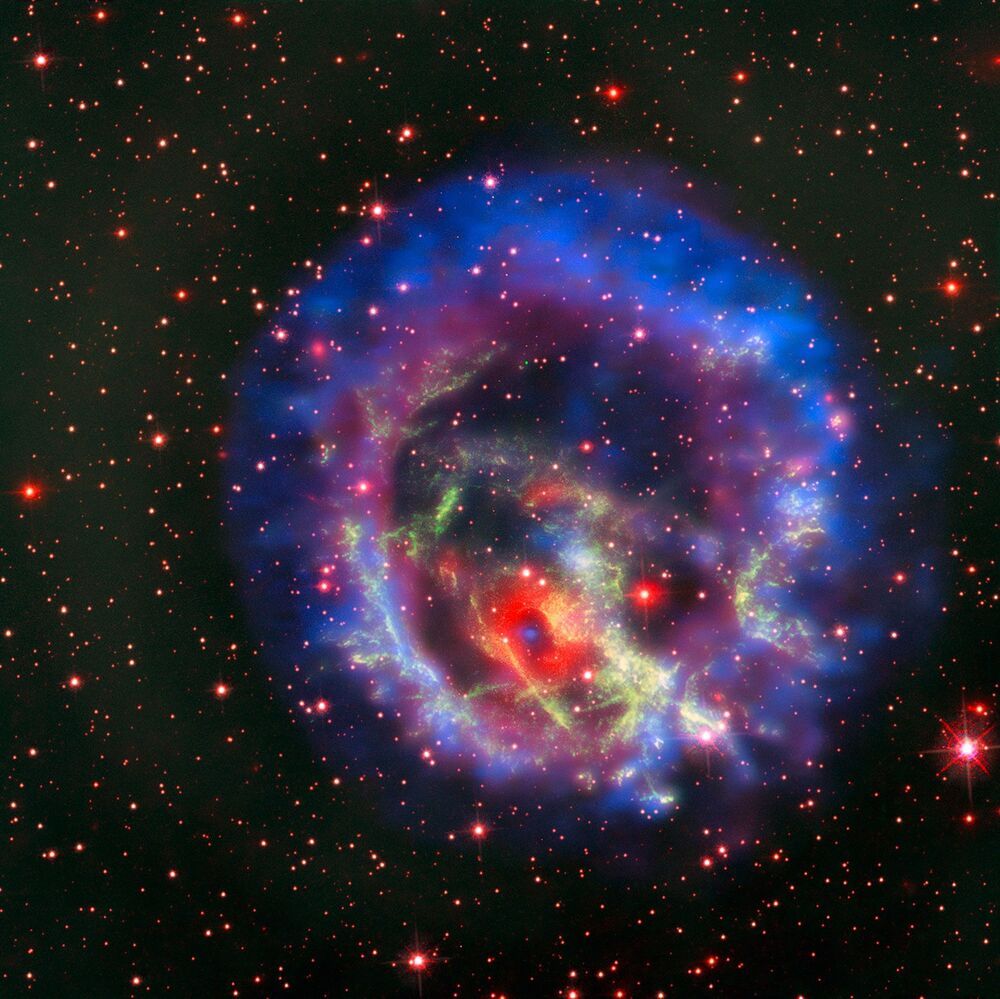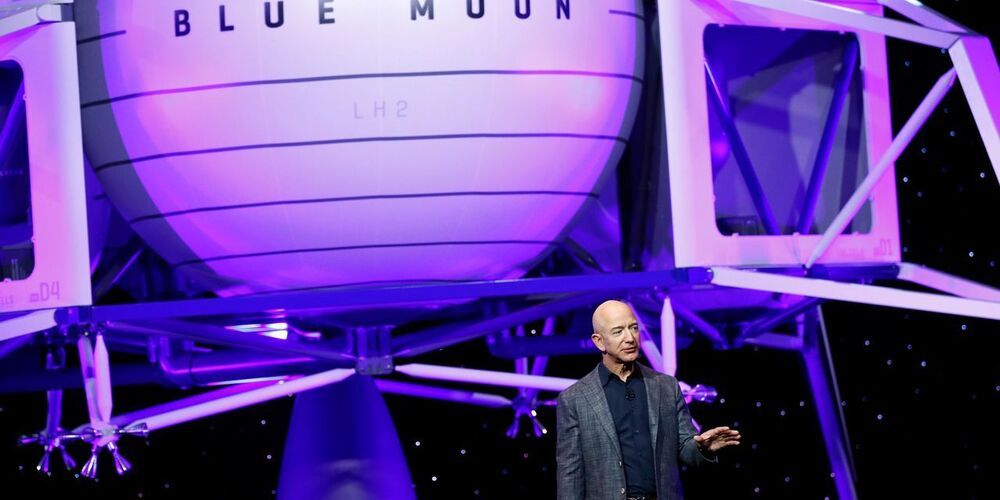Amazon founder’s brother, Mark, and one other person will join Bezos onboard Blue Origin vessel on 20 July.



Physicists in Israel have created a quantum interferometer on an atom chip. This device can be used to explore the fundamentals of quantum theory by studying the interference pattern between two beams of atoms. University of Groningen physicist, Anupam Mazumdar, describes how the device could be adapted to use mesoscopic particles instead of atoms. This modification would allow for expanded applications. A description of the device, and theoretical considerations concerning its application by Mazumdar, were published on 28 May in the journal Science Advances.
The device, created by scientists from the Ben-Gurion University of the Negev, is a so-called Stern Gerlach interferometer, which was first proposed 100 years ago by German physicists Otto Stern and Walter Gerlach. Their original aim of creating an interferometer with freely propagating atoms exposed to gradients from macroscopic magnets has not been practically realized until now. “Such experiments have been done using photons, but never with atoms,” explains Anupam Mazumdar, Professor of Theoretical Physics at the University of Groningen and one of the co-authors of the article in Science Advances.
The Israeli scientists, led by Professor Ron Folman, created an interferometer on an atom chip, which can confine and/or manipulate atoms. A beam of rubidium atoms is levitated over the chip using magnets. Magnetic gradients are used to split the beam according to the spin values of the individual atoms. Spin is a magnetic moment that can have two values, either up or down. The spin-up and spin-down atoms are separated by a magnetic gradient. Subsequently, the two divergent beams are brought together again and recombined. The spin values are then measured, and an interference pattern is formed. Spin is a quantum phenomenon, and throughout this interferometer, the opposing spins are entangled. This makes the interferometer sensitive to other quantum phenomena.

Rutgers engineers have created a highly effective way to paint complex 3D-printed objects, such as lightweight frames for aircraft and biomedical stents, that could save manufacturers time and money and provide new opportunities to create “smart skins” for printed parts.
The findings are published in the journal ACS Applied Materials & Interfaces.
Conventional sprays and brushes can’t reach all nooks and crannies in complex 3D-printed objects, but the new technique coats any exposed surface and fosters rapid prototyping.

MIT engineers have discovered a new way of generating electricity using tiny carbon particles that can create a current simply by interacting with liquid surrounding them.
The liquid, an organic solvent, draws electrons out of the particles, generating a current that could be used to drive chemical reactions or to power micro-or nanoscale robots, the researchers say.
“This mechanism is new, and this way of generating energy is completely new,” says Michael Strano, the Carbon P. Dubbs Professor of Chemical Engineering at MIT. “This technology is intriguing because all you have to do is flow a solvent through a bed of these particles. This allows you to do electrochemistry, but with no wires.”

Researchers have found that graphene-enhanced hard drives can store data at ten times the density of existing HDDs.
By leveraging the wonder material graphene, a group at the University of Cambridge is claiming an advance in data storage that resembles more of a leap than a step forward. The new design unlocks higher operating temperatures for hard disk drives (HDDs) and with it, unprecedented data density, which the team says represents a ten-fold increase on current technologies.
In a HDD, data is written onto fast-spinning platters by a moving magnetic head. Special layers called carbon-based overcoats (COCs) protect these platters from mechanical damage and corrosion during operation, though these can only perform within a certain temperature range and also take up a lot of space.
The Cambridge researchers were able to replace the COCs used in commercial HDDs with between one and four layers of graphene, a material that is a single layer of carbon atoms with incredible strength and flexibility, among other highly-valued properties. The thinness of the graphene enabled significant space savings but also outperformed current COCs in preventing mechanical wear, reduced corrosion by 2.5 times and also offered a two-fold reduction in friction.


I imagine it would pool into two groups: one made up of ivory tower PhDs quibbling over their latest studies, and one made up of conspiracists who are a little too quick to conflate science with magic.
Affiliate Disclaimer: Longevity Advice is reader-supported. When you buy something using links on our site, we may earn a few bucks.
Update 6/7/2021: This post has been updated since we originally published it in August 2020. Several new longevity life extension blogs have been added and one that is no longer active has been removed.
What would the longevity community look like without life extension blogs?


When a massive star dies, first there is a supernova explosion. Then, what’s left over becomes either a black hole or a neutron star.
That neutron star is the densest celestial body that astronomers can observe, with a mass about 1.4 times the size of the sun. However, there is still little known about these impressive objects. Now, a Florida State University researcher has published a piece[1] in Physical Review Letters arguing that new measurements related to the neutron skin of a lead nucleus may require scientists to rethink theories regarding the overall size of neutron stars.

Jeff Bezos plans to travel to space next month as one of the first passengers carried by Blue Origin, the Amazon.com Inc. founder’s space company.
Mr. Bezos said in an Instagram post Monday that he will be one of the inaugural passengers on Blue Origin’s New Shepard spacecraft, during its first crewed flight scheduled for launch from West Texas on July 20. Mr. Bezos said that his brother, Mark Bezos, will also be on board.
“I want to go on this flight because it’s a thing I’ve wanted to do all my life,” Mr. Bezos said in a video posted to Instagram. “It’s an adventure. It’s a big deal for me.”